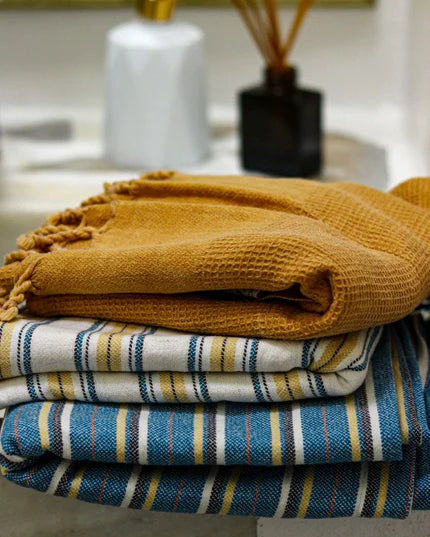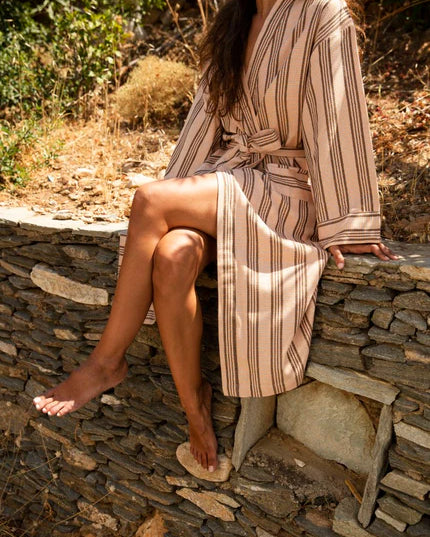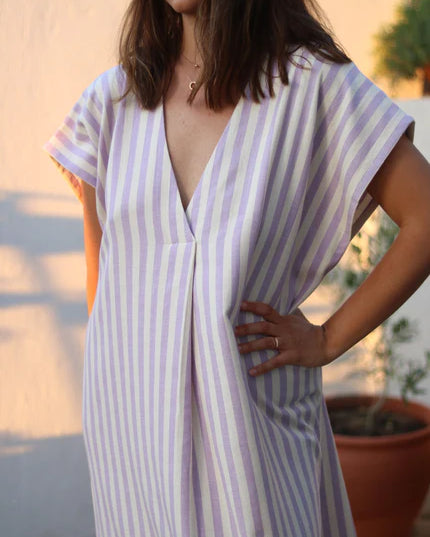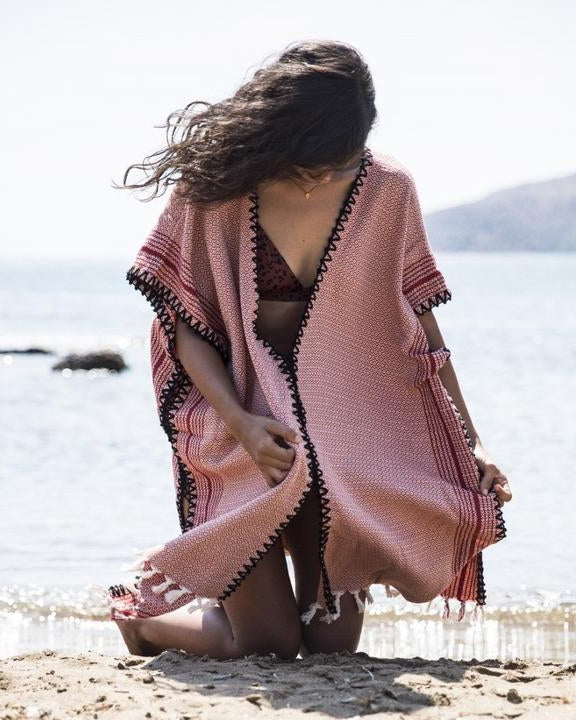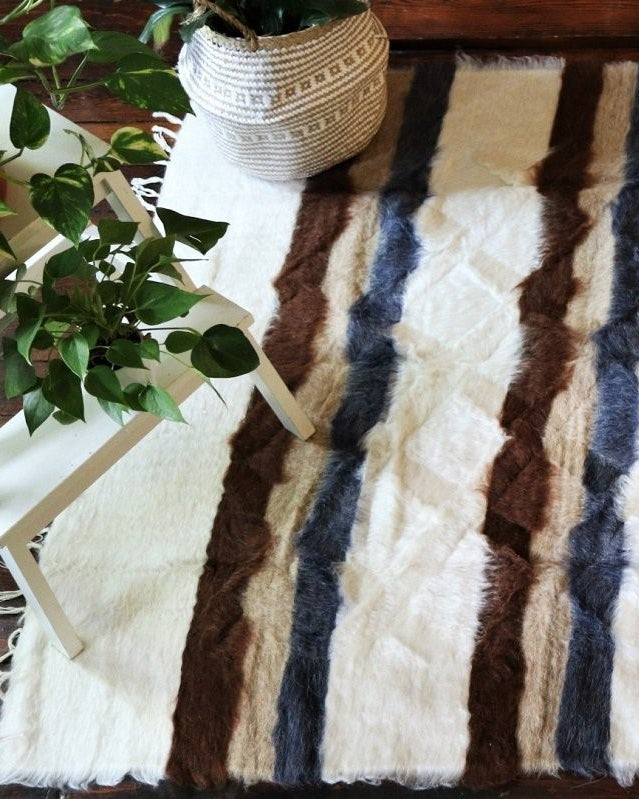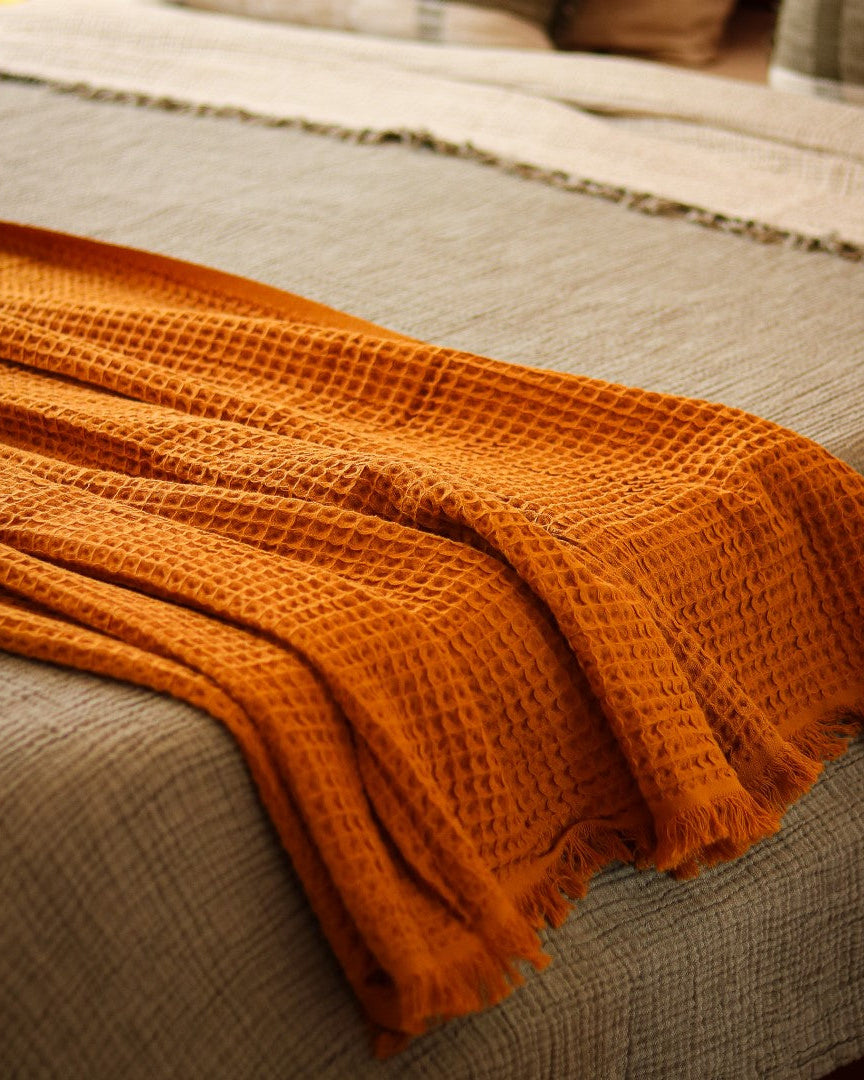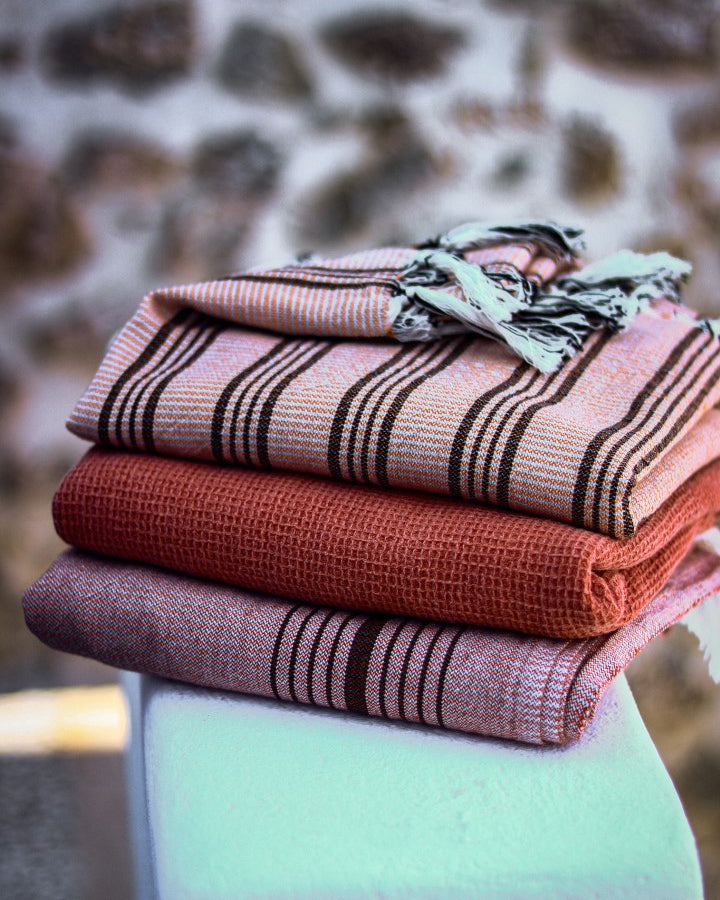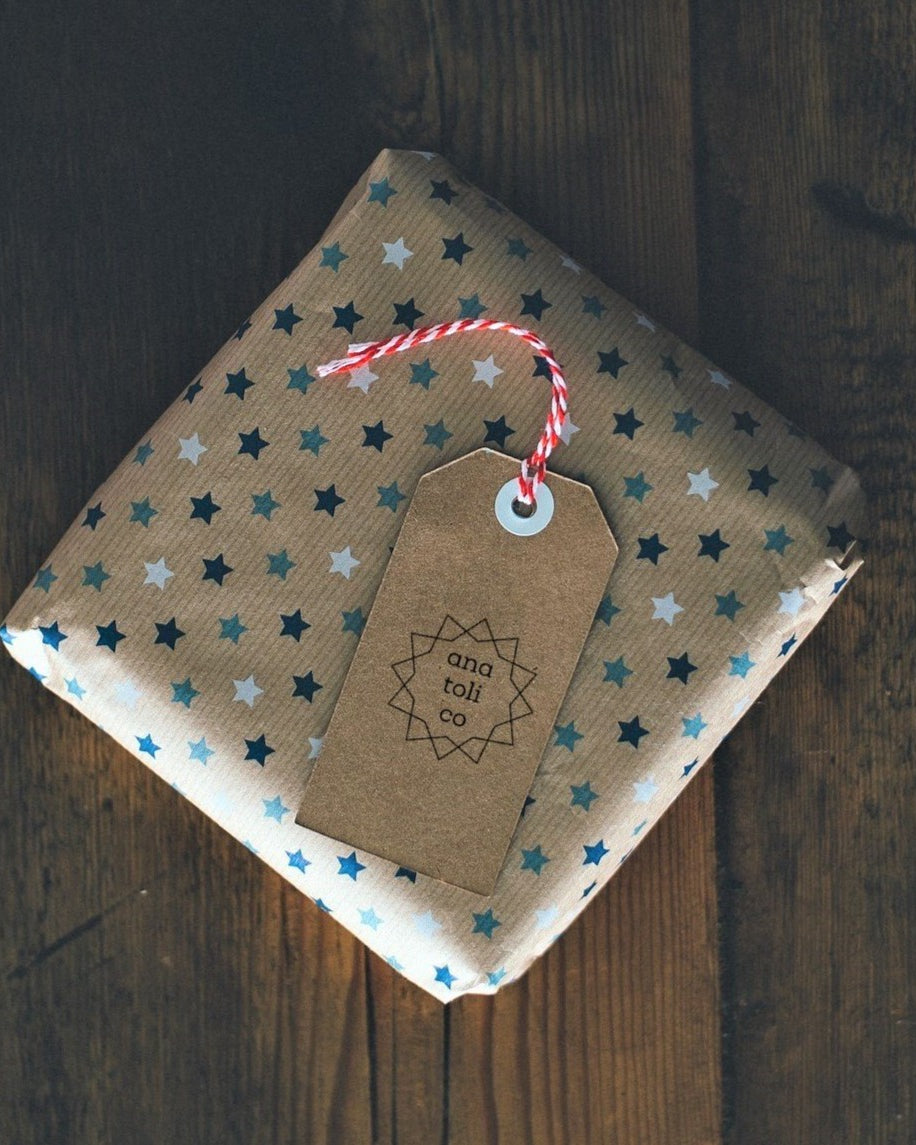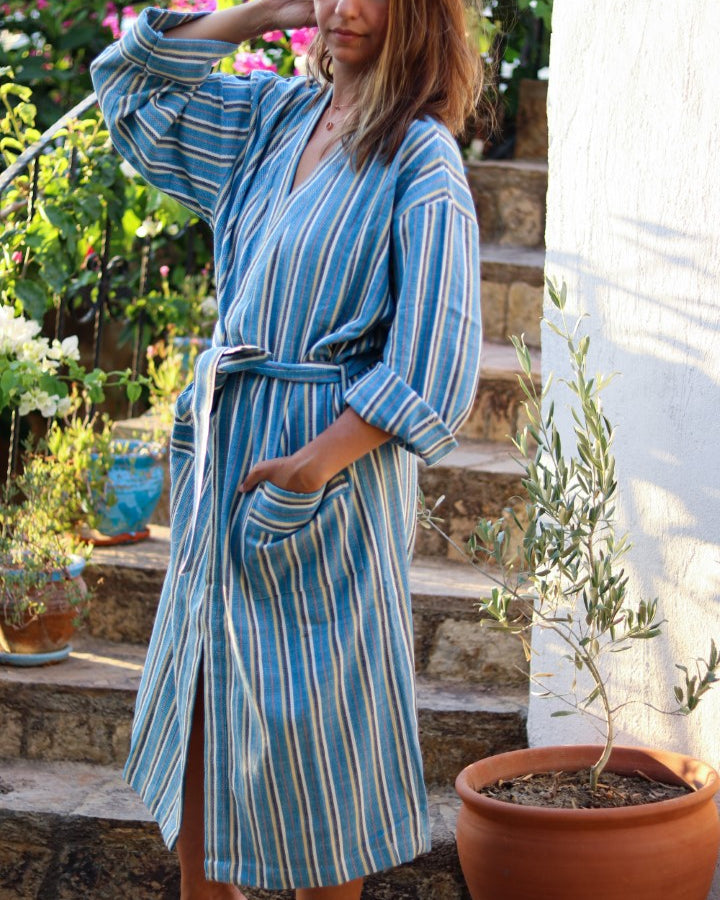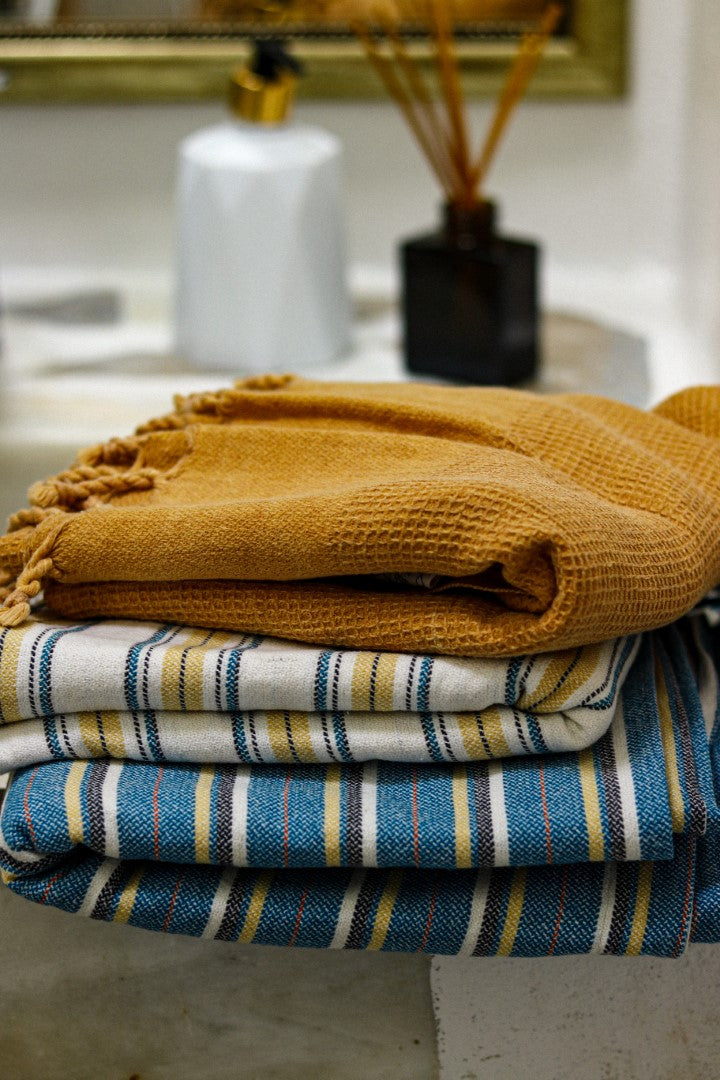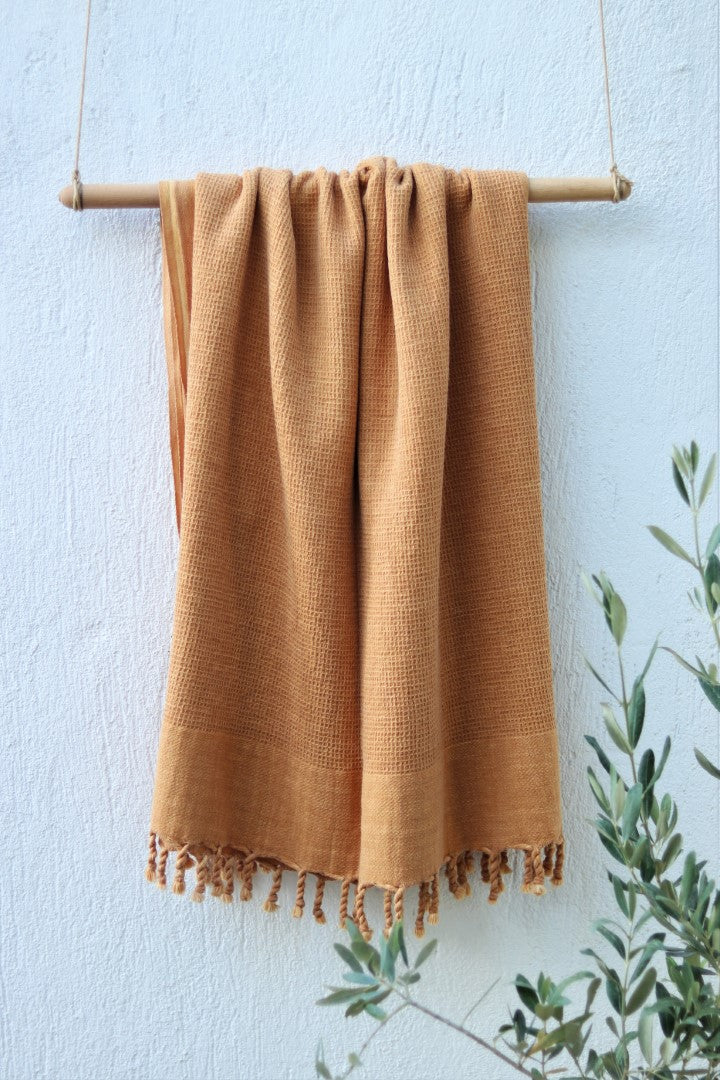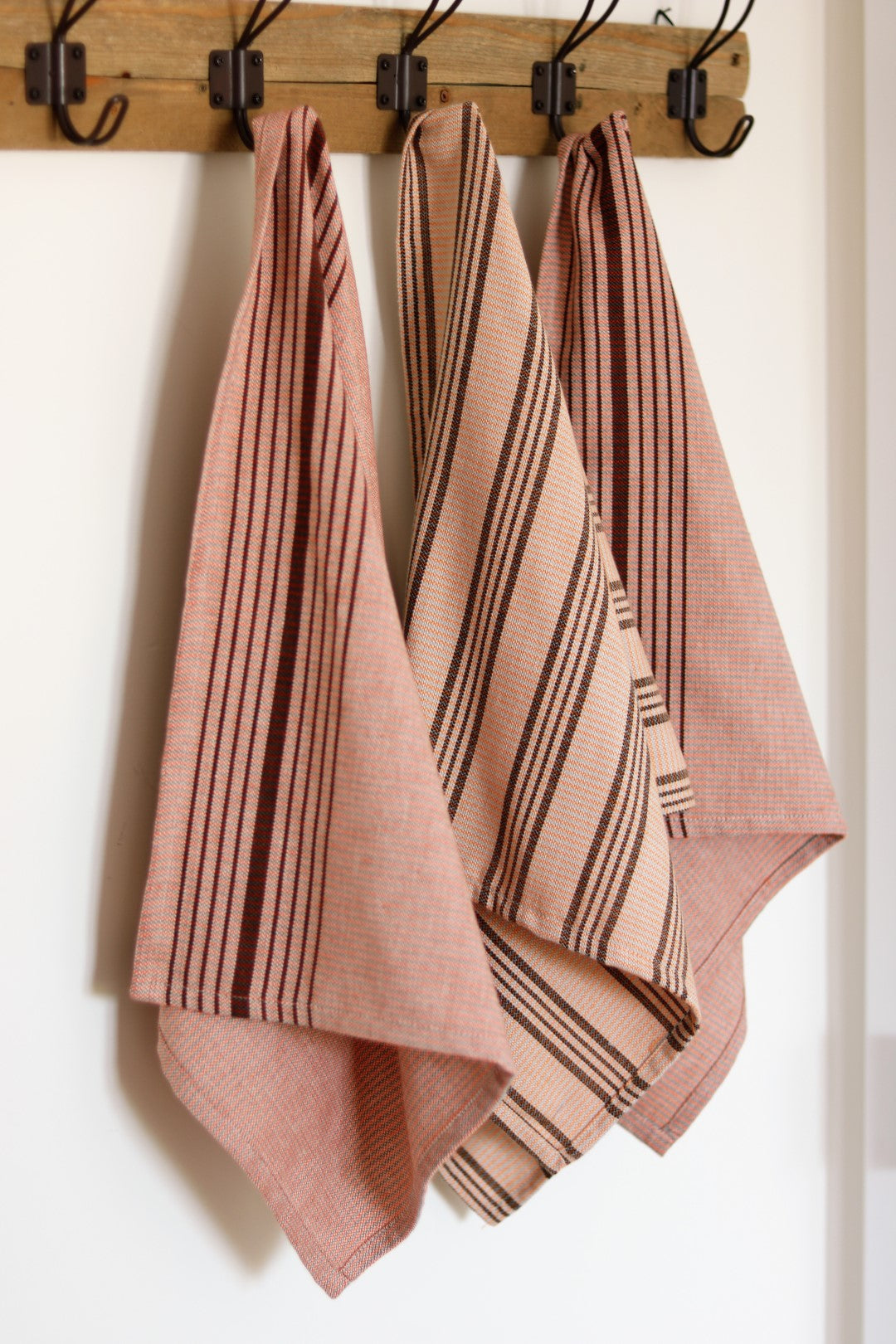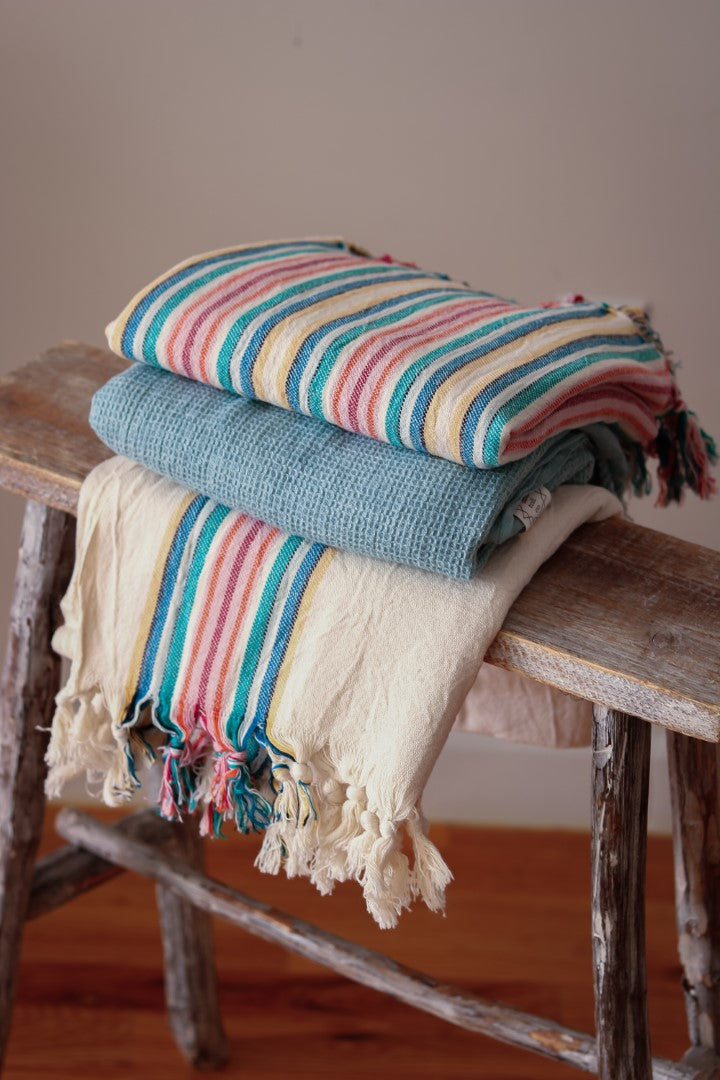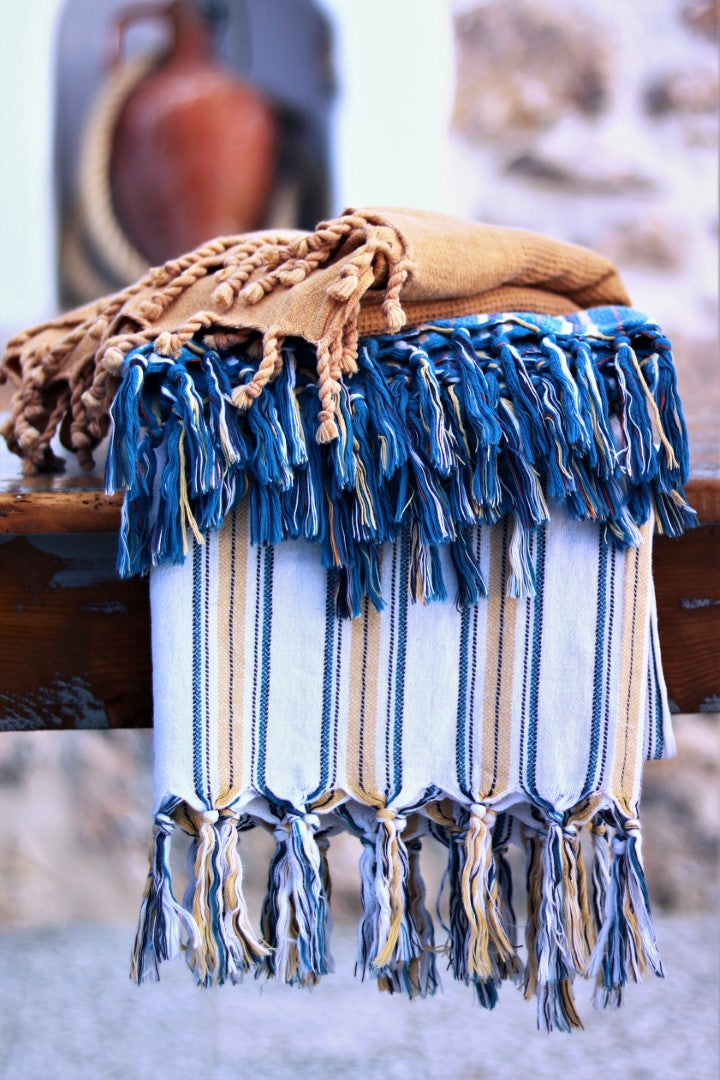You’ve probably seen dozens of labels on towels, sheets, and clothes. Most are easy to ignore. But when you spot an OEKO-TEX label, it’s worth paying attention. This isn't just marketing fluff; it's a real-deal guarantee that what you're buying is safe for your skin.
What the OEKO TEX Certified Label Really Means
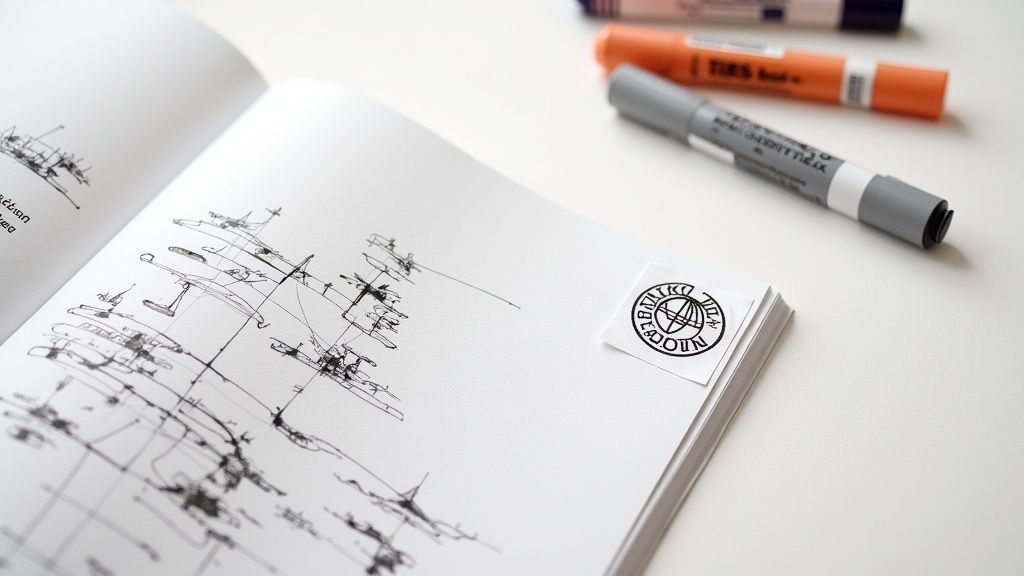
Think of the OEKO-TEX certification as a rigorous health check-up for textiles. It's not just a quick glance, either. Every single piece of the item gets tested—the fabric, the thread used for stitching, the buttons, the zippers, even the dyes and prints.
This independent testing process checks for a huge list of substances that are known to be harmful. We're talking about over 350 specific chemicals, from pesticides and heavy metals to banned dyes. If a product has the OEKO-TEX label, it means it passed the test and is free from harmful levels of these substances.
Essentially, it's a global standard that gives you peace of mind, knowing the textiles you bring into your home are safer for you and your family.
Key Takeaway: An OEKO-TEX certification is all about product safety. It confirms that every component of an item, from fabric to zipper, has been tested and found free from harmful substances.
To make it even clearer, let's break down what this certification tells you at a glance.
OEKO TEX at a Glance What It Means for You
Here’s a quick summary of the core principles behind the OEKO-TEX certification.
| Aspect | What It Means | Example |
|---|---|---|
| Tested for Harmful Substances | Your textile is free from a long list of chemicals known to be hazardous to your health. | No harmful dye residues that could irritate your skin or cause allergic reactions. |
| Component-Wide Testing | It's not just the main fabric. Every part of the product is certified safe. | The thread, buttons, and even the lining have all passed the same safety tests. |
| Confidence in Textiles | It’s a globally respected, independent certification you can trust. | When buying for a baby or child, this label ensures the product is gentle and safe. |
This commitment to safety is a hallmark of high-quality textiles. It’s a big reason we believe in pairing premium materials with this rigorous standard, which you can learn more about by understanding what is Turkish cotton and why this certification elevates its natural quality even further.
Why OEKO-TEX Matters in a Crowded Market
In a world overflowing with product choices and clever marketing, it’s tough to know who to trust. The OEKO-TEX certification is like a universal seal of approval—a clear, consistent signal that a product is safe for you and your family.
It’s more than just a tag on a towel. It's an independent, globally recognized guarantee that the textile has been tested for harmful substances and found to be harmless. For us at Anatolico, it's a non-negotiable part of our promise. For you, it means you can stop guessing and start trusting.
A Standard the World Trusts
The impact of OEKO-TEX isn't just a niche trend; it’s a global movement that's gaining momentum every year. You can see its growing importance in the numbers alone.
In just the last financial year, OEKO-TEX issued over 57,000 certificates—that’s an 8% jump from the year prior. This isn't happening by accident. It's driven by a network of 17 independent testing institutes around the globe, all working to uphold the same high standard. You can dig deeper into these trends in the full report on textile industry standards.
But here’s what really makes it so reliable: the standard never sits still.
The OEKO-TEX testing criteria are updated at least once a year. This isn't just a small tweak; they actively incorporate new scientific research and legal regulations to stay ahead of potential health risks.
This commitment to staying current means the label you see today reflects the very latest in safety science. It’s your assurance that our Anatolico textiles aren’t just meeting a standard—they’re meeting a standard that evolves to keep you safe.
How STANDARD 100 Protects You From Harmful Chemicals
The most recognizable label in the OEKO-TEX system is, without a doubt, STANDARD 100. The simplest way to think about it is as a comprehensive health check-up for your textiles. It’s not just a quick glance, either—it’s a deep dive to ensure every single component is completely harmless for you and your family.
This means the main fabric of a towel, the thread used to stitch it, and even the non-fabric parts like zippers, buttons, or printed designs are all scrutinized. The ultimate goal is simple: to make sure the finished product you bring into your home is safe to touch, wear, and live with every single day.
What Gets Tested During Certification
The list of tested substances is long, and it gets updated at least once a year to keep up with new scientific findings and regulations. This testing zeroes in on chemicals that are either legally banned or simply known to be bad for our health.
Here are a few of the key things they look for:
- Carcinogenic and allergenic dyes that can trigger skin irritation or worse.
- Pesticides and herbicides, which can linger as residue from how the raw materials were grown.
- Heavy metals like lead, mercury, and arsenic—all of which are toxic.
- Formaldehyde, a common ingredient in anti-wrinkle finishes that can cause respiratory problems.
These strict lab tests cover hundreds of individual substances. What really makes this certification so trustworthy is that its safety limits often go beyond what's legally required in places like the US and the EU. OEKO-TEX sets a much higher standard for consumer safety.
This painstaking process ensures that anything with the STANDARD 100 label is safe for everyone, even people with very sensitive skin. It provides a crucial layer of confidence, especially for items that spend a lot of time against your skin, like towels and bedding.
When you're choosing new sheets, safety is just as important as comfort. For more on what makes great bedding, check out this guide to finding the best bed sheet material. Knowing your textiles are also certified adds that extra peace of mind. This is especially true for natural fibers; we dive deeper into this topic in our article on https://www.anatolico.co/blogs/news/how-eco-friendly-is-cotton.
Understanding the Four OEKO-TEX Product Classes
When it comes to textile safety, one size doesn't fit all. That’s why the OEKO-TEX STANDARD 100 certification system is so brilliant—it’s not a single, rigid test. Instead, it smartly categorizes products into four distinct classes.
The guiding principle is pure common sense: the more a fabric touches your skin, the tougher the safety standards it has to meet. This tiered approach guarantees that products meant for the most sensitive among us, like babies, pass the most demanding tests imaginable.
Class 1: The Gold Standard for Babies and Toddlers
This is the strictest category of them all, covering textiles for babies and toddlers up to age three. Think about it—their skin is incredibly delicate, and they have a natural tendency to put everything in their mouths. For these reasons, the limits for potentially harmful substances are set at the absolute lowest levels.
- Examples: Baby clothes, bibs, bedding, cloth diapers, and soft toys.
- Key Requirement: Every single component, from the thread to the zipper, must be tested for saliva-resistance. This ensures that no harmful dyes or chemicals can transfer if a baby chews on the item.
Classes 2, 3, and 4: From Your Wardrobe to Your Home
As the level of skin contact lessens, the specific testing requirements are adjusted, but the commitment to safety never wavers.
- Product Class 2: This is for textiles that have significant direct contact with your skin. Basically, it’s the clothing you live in, like t-shirts, underwear, socks, and bed linens.
- Product Class 3: Here you’ll find items with minimal or no direct skin contact. This includes outerwear like jackets and coats, as well as accessories like belts.
- Product Class 4: This class is for decorative and furnishing materials. It covers things like curtains, tablecloths, and upholstery fabrics that beautify our homes.
The different product classes are a big part of what makes the STANDARD 100 so practical and effective. Here's a quick breakdown of how they compare.
OEKO-TEX STANDARD 100 Product Classes Explained
| Product Class | Intended Use | Examples | Testing Strictness |
|---|---|---|---|
| Class 1 | For babies and toddlers up to 3 years old | Baby clothes, soft toys, bedding | Highest; includes saliva-resistance test |
| Class 2 | Textiles with large surface area in direct skin contact | T-shirts, underwear, bed linens | High; for items worn close to the skin |
| Class 3 | Textiles with minimal or no direct skin contact | Jackets, coats, belts | Moderate; for outerwear and accessories |
| Class 4 | Furnishing and decorative materials | Curtains, tablecloths, upholstery | Standard; for home textiles and decor |
Ultimately, this structure ensures that every certified product is safe for its intended purpose. A curtain in Class 4 doesn't need to be saliva-proof, but a baby’s bib in Class 1 absolutely does. Both, however, are tested to be free from harmful levels of substances relevant to how we use them.
Going Beyond Safety with Sustainable Production Labels
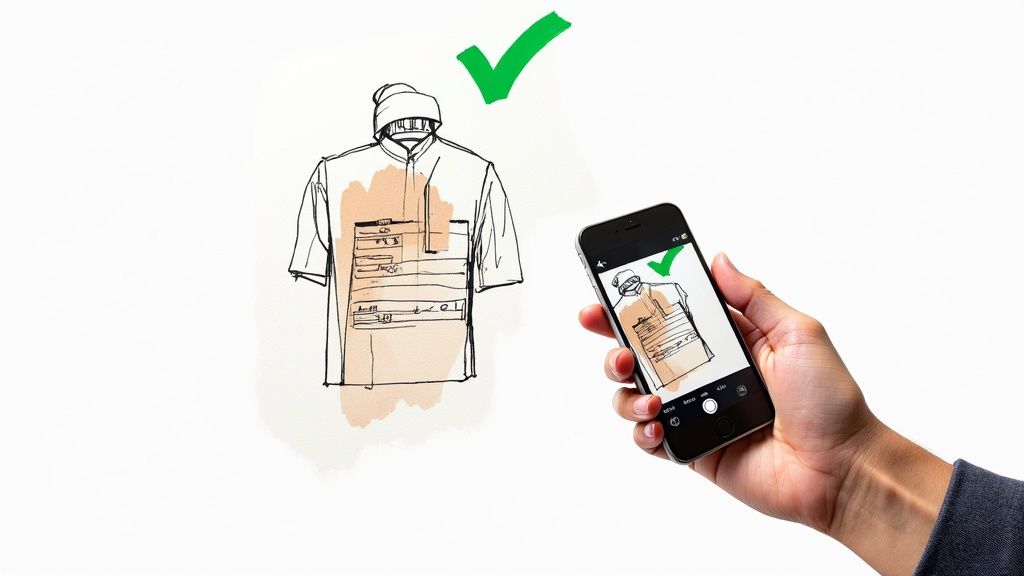
Knowing your new towels are safe to touch is a great start, but it’s only part of the picture. The STANDARD 100 label confirms the final product is free from harmful chemicals, but what about its journey to your home? What were the factory conditions like? What was the environmental toll?
For many of us, the "how" and "where" a product was made matter just as much as the final result. This is where OEKO-TEX’s other certifications come into play, offering a much deeper look into a product’s ethical and environmental credentials.
Think of it this way: while STANDARD 100 is the destination, labels like STeP (Sustainable Textile and Leather Production) and MADE IN GREEN show you the entire roadmap. STeP focuses on the factories themselves, certifying that they operate with sound environmental practices and fair social conditions. Then, MADE IN GREEN brings it all together for you, the shopper.
MADE IN GREEN: A Label for Total Transparency
The MADE IN GREEN label is one of the most rigorous and transparent certifications out there. It’s a powerful signal because for a product to earn this tag, it has to clear two very high bars:
- It must be tested for harmful substances and certified under STANDARD 100.
- It must be produced in a STeP certified facility, which guarantees environmentally friendly processes and socially responsible working conditions.
This combination makes it a truly holistic seal of approval, covering both the product and the process. Exploring other certifications that focus on material sourcing and environmental responsibility, such as understanding the benefits of organic underwear, can provide an even broader perspective.
MADE IN GREEN doesn't just promise a safe product; it guarantees it was made sustainably. It even lets you trace its journey through the entire supply chain with a unique product ID, giving you verifiable proof of the manufacturing conditions and environmental standards.
With over 18,000 products now certified with MADE IN GREEN, it's clear that shoppers are increasingly looking for this level of assurance.
What’s truly impressive is the traceability. Every MADE IN GREEN item comes with a QR code or a unique ID. You can scan it and see the entire production journey, from the weavers to the finishers. This transparency creates a direct link between you and the people who made your product, ensuring accountability every step of the way. Choosing materials that align with these values is also key, which is why we explore topics like "how eco friendly is linen?" on our blog.
So, How Do You Know a Label is Legit?
With all the different certifications out there, it’s easy to feel a bit skeptical. Is that OEKO-TEX certified tag on your new towels the real deal? The good news is, you don't have to just trust the brand's word for it. OEKO-TEX has made it incredibly simple to check for yourself.
Think of it like a tracking number for your peace of mind. Every authentic OEKO-TEX label has a unique certificate number printed right on it. This number is your key to unlocking all the details behind that certification.
Your Step-by-Step Guide to Verification
You can confirm a product's status in just a few seconds using the official OEKO-TEX Label Check tool online. It’s designed to be quick and completely transparent.
Here’s how it works:
- Find the Number: First, grab your textile product and look for the OEKO-TEX label. You'll see a unique certificate or label number on it.
- Go to the Source: Head over to the official OEKO-TEX Label Check website.
- Enter and Check: Pop that number into the search box and hit the "Check" button.
The tool will immediately pull up the certificate's status. It’s that easy. Here's a peek at what the website looks like:
If the number is valid, the site will confirm it on the spot. It often even tells you which specific product class the item was tested for, giving you that extra layer of confidence in what you’ve brought into your home.
Your OEKO-TEX Questions, Answered
As you dig deeper into what OEKO-TEX certification really means, a few questions tend to pop up. Let's clear them up so you can feel confident in the textiles you choose for your home.
Is OEKO-TEX the Same as Organic?
That's a common point of confusion, and it’s a great question. The short answer is no, they aren’t the same, but they work beautifully together.
Think of it this way: organic certifications, like GOTS (Global Organic Textile Standard), look at the very beginning of the process. They make sure fibers like cotton are grown naturally, without synthetic pesticides or fertilizers.
OEKO-TEX, on the other hand, steps in to test the finished product. It’s the final safety check that ensures the towel, robe, or blanket you’re about to use is free from a long list of harmful substances. So, while a product can be one without the other, finding something with both certifications gives you total peace of mind—from the farm to your home.
Are All Products Tested with the Same Strictness?
Not at all. OEKO-TEX uses a smart, practical approach where the testing standards change based on how close the product will get to your skin.
We touched on the four product classes earlier. The most intense testing is reserved for Product Class 1, which covers all the things made for babies and toddlers. A teething bib, for example, is going to face much stricter chemical limits than a decorative throw pillow because a baby is far more sensitive.
This tiered system makes perfect sense—it ensures every single certified product is genuinely safe for how it's meant to be used.
So, Why Should I Bother Looking for the OEKO-TEX Label?
Honestly, it comes down to trust. When you see that label, you get instant assurance that what you're buying is safe for you and your family.
You don't have to worry about the hidden chemicals that can irritate sensitive skin or cause other health issues. Plus, by choosing certified products, you're sending a clear message that you support companies who prioritize consumer safety and responsible manufacturing. It's a simple choice that makes a big difference.
At Anatolico, we believe you should never have to compromise on safety for quality. That’s why all our textiles are OEKO-TEX certified. Explore our artisan-crafted Turkish towels, robes, and home goods at https://www.anatolico.co.

